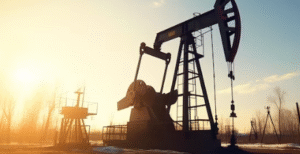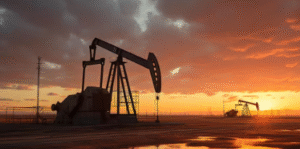$XOM $DVN $RRC
#ShaleGas #NaturalGas #EnergyMarket #EnergyCrisis #USGasProduction #ShaleDrilling #GasSupply #OilandGas #EnergyInvestments #EnergyStocks #NaturalGasPrices #USShale
U.S. natural gas production from shale and tight formations has seen a slight decline in the first nine months of 2024, marking the first significant contraction in U.S. shale gas output since records began in 2000. The output from shale, which contributes to an estimated 79% of total dry natural gas production in the country, fell by about 1% year-on-year. Production levels decreased to approximately 81.2 billion cubic feet per day (Bcf/d) when compared to the same period in 2023. While a 1% change may seem minor, the long-term implications could be significant for the energy landscape—a sector already under pressure from supply chain constraints, fluctuating demand, and a global push towards transitioning to cleaner energy sources.
This slowdown in production could bring unease to markets already grappling with high volatility in energy prices. Shale formations have long acted as a stabilizing force for the U.S. energy market, contributing massively to its growth and independence in recent years. However, if this trend continues through the remainder of 2024, industry analysts predict that it could lead to further price volatility. The U.S., which has become a major exporter of natural gas due to its expansive shale gas production, could face complicated scenarios with international clients and dependencies, as reduced production could strain supplies. Some of the industry’s biggest players, such as ExxonMobil ($XOM), Devon Energy ($DVN), and Range Resources ($RRC), will be closely monitored to see how they adjust their operations in the wake of these changes.
The decline can also be linked to other macroeconomic forces at play. Rising interest rates and tighter credit markets have pressured energy companies into being more cautious about capital investments, particularly in capital-intensive shale exploration. Coupled with growing concerns over environmental regulations, it seems the previous years of rapid growth in shale production may have met a ceiling. Additionally, innovations in renewables and increasing global legislative pressure toward reducing carbon emissions could further dampen investment in new shale drilling projects. If this trajectory continues, it may reshape future U.S. natural gas policies, considering the central role the shale sector plays in the overall energy mix.
Market analysts are expressing caution amid this dip. Investors in energy stocks are likely to experience some turbulence, as the price of natural gas could see further swings. Natural gas futures have reflected this uncertainty, and a continued production decline may drive up downstream costs for industry players and consumers relying on gas to heat homes, generate power, and fuel industrial activities. Despite limited capacity concerns, some analysts remain optimistic that technological advancements in extraction and a more streamlined regulatory framework could reverse this downward trend in the coming years. For now, though, these are significant developments for a sector as vital as U.S. shale gas.











Comments are closed.